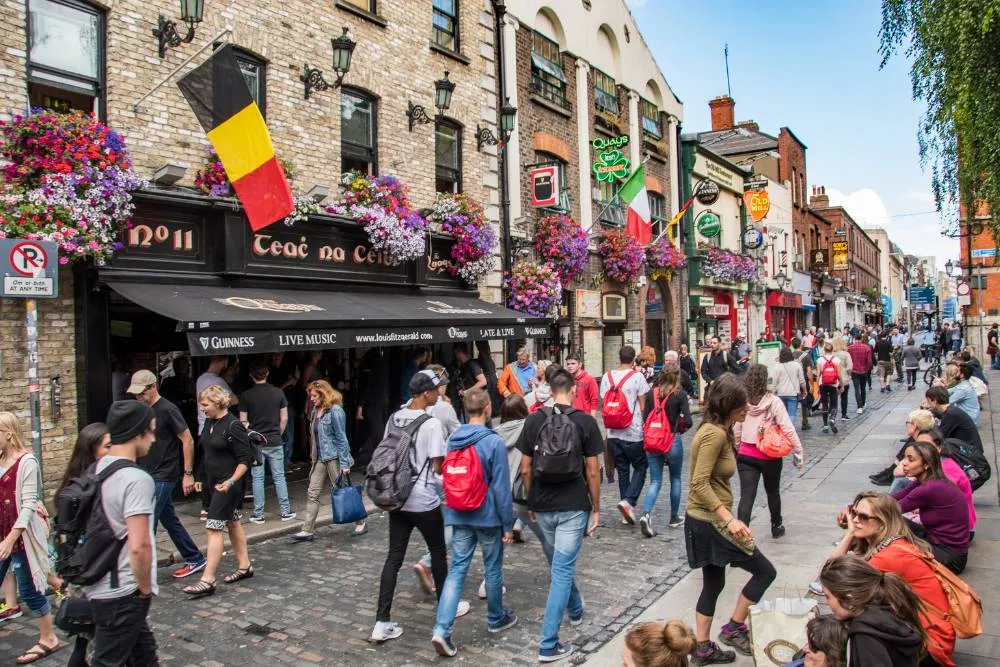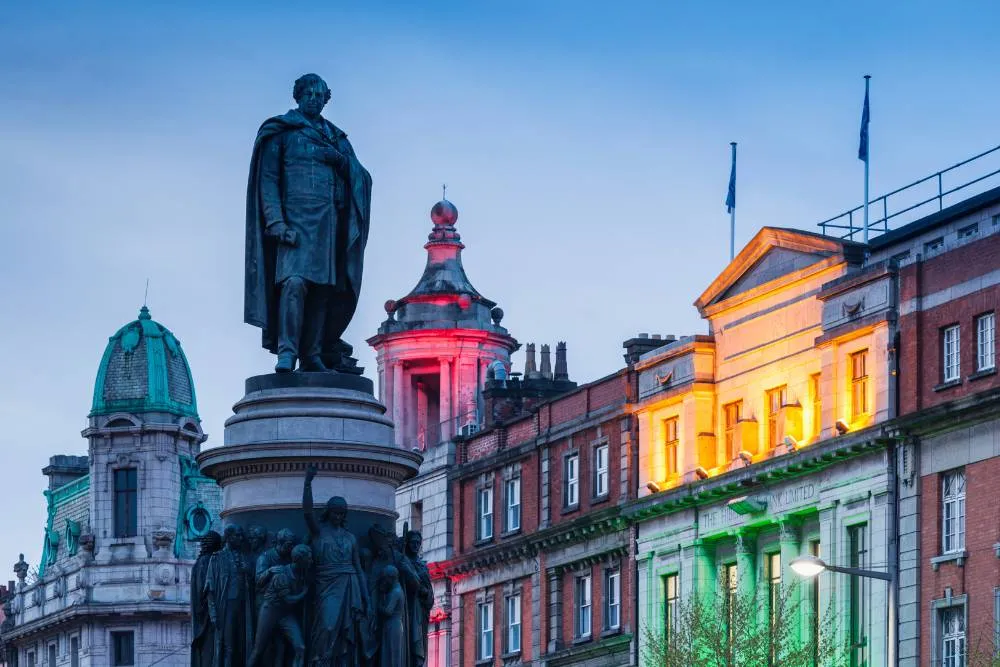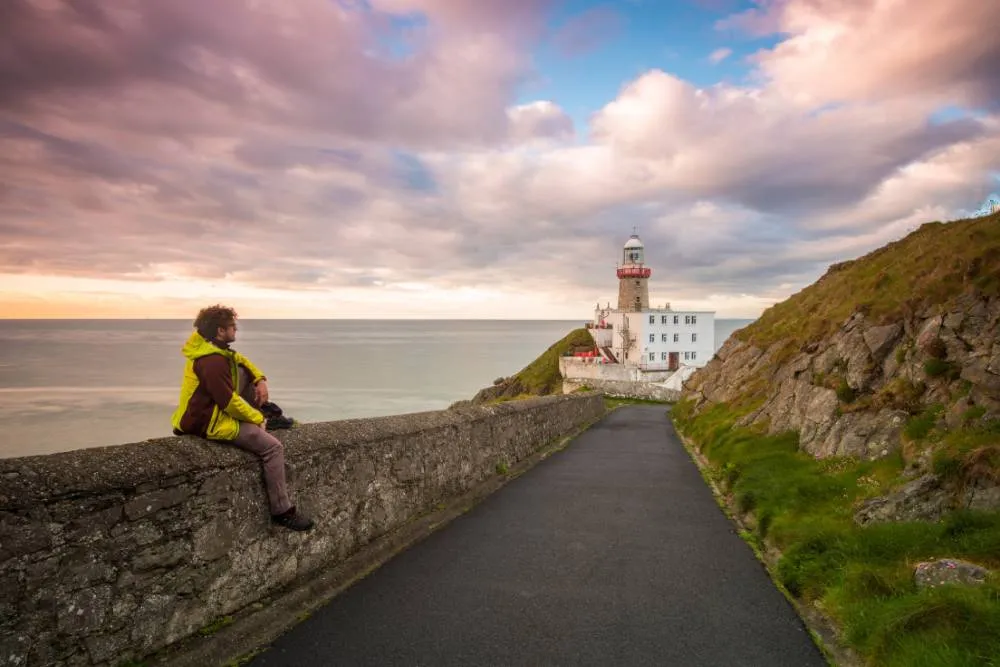Dublin on a budget: 10 ways to save money when you visit
7 min readTravel on a budget to the capital of Ireland and discover money-saving tips, hidden gems, local knowledge and great deals on food, drink, sightseeing and more
We’re experts in budget travel here at Kiwi.com, so in this series, we’re looking at the 10 most expensive destinations in the world and providing you with handy guides on how to see those places on the cheap. Let’s head to Ireland and see how you can make the most of your time in Dublin.
When to visit Dublin
Summer (July and August) is the warmest time of year and therefore the busiest, although statistically, spring is the least rainy month (“driest” would be pushing it as the city gets around 15 to 20 days of rain per month on average). So for the best weather-to-price deals, we’d say to aim for the shoulder seasons — April-May or September-October strike a good balance.
From Dublin airport and around on public transport
@dodublintours Sit back and take it all in ☘️ #dublincity #visitdublin #traveltiktok ♬ (It Goes Like) Nanana – Edit – Peggy Gou
There is an express bus from the airport, but it costs €12 return. A more sensible thing to do if you’re planning on using public transport for the time you’re there would be to invest in GetYourGuide’s DoDublin Freedom Card. It’ll get you from the airport using the local bus route 41 and then functions as a travel card.
For €47, you get a 48-hour pass for the city’s hop-on-hop-off tour buses, and a 72-hour pass for the entire public transport network: the Dublin Bus network, the Go-Ahead bus network, DART and Commuter trains, and all Luas tram lines. That means that as well as getting anywhere in the city, you can also head a bit further out and visit some of the pretty local coastal towns. It might seem a lot in one go, but it’s a sound investment.
Get on your bike
If you’d prefer to travel by pedal power, Dublin’s citywide bike rental service offers a three-day subscription for just €5. Any journeys under 30 minutes are free then it’s €0.50 for an extra half hour, €1.50 for two hours… or you can just drop the bike off at a rental station within your first thirty minutes and hop on another one.
Cheap and free museums
You can get a sense of the city’s history and culture for not very much (if any!) money if you pick the right places. Two of Dublin’s biggest and best museums, the National Museum of Ireland – Archaeology (ancient gold, Viking treasures and preserved Iron Age bodies found in bogland among the exhibits) and the nearby National Gallery of Ireland, are free to visit. If you turn up at the weekend at the gallery, you can even take a free tour run by local art experts.
Otherwise, you could try the Museum of Literature Ireland (MoLI), ideal for fans of Irish writers, with its rotating exhibition of various works including handwritten manuscripts and immersive installations. This is free on the first Friday of every month between 18:00 and 21:00 and free for students before noon every Wednesday (otherwise €13.50). Or what about the Little Museum of Dublin, an insight into the city over the last 100 years? They run free tours every Wednesday morning, a free Football Walking Tour, and a treasure hunt around St. Stephen’s Green for €8.
Walking tours
There are a bunch of free (but expect to tip) walking tours around different parts of the city (such as this one), as well as pub crawls, haunted Dublin tours that take place at night, and many more. A lot of them are also available in languages other than English so you’ll be bound to find something that’ll help you get your bearings for the rest of your stay.
Statue-spotting
Dublin has a number of famous sons and daughters, many commemorated in sculpture, and looking for them will take you to interesting parts of the city.
On Merrion Square, for example, you’ll see a memorial to Oscar Wilde, but you’ll also encounter the Open Air Gallery. Every Sunday, over 200 artists display and sell their work but you can come and browse for free while taking in the sights of this magnificent Georgian square. James Joyce resides on the 18th-century North Earl Street, poet and writer Patrick Kavanagh sits on a bench on the banks of the Grand Canal at Baggot Street Bridge, and Thin Lizzy frontman Phil Lynott stands proudly in front of the famous Bruxelles Rock Pub. See who else you can spot on your travels!
Free entertainment
Plenty of the pubs in Dublin have live music on for free and although your beers might cost you a fair bit, you’re sure to be entertained, whether it be by folk, rock, jazz, singer-songwriters, or simply a jam session. Look out for pub quizzes or karaoke nights too and make friends/get competitive/annoy people to your heart’s content.
Live music events at the famous Whelan’s are not free but fairly cheap. A small venue that’s often been the launch pad for Irish bands and singers, many of the events are ticketed (but generally not that pricey), but they have occasional free nights, and things like a silent disco for €5 as well as their legendary indie night with live bands from midnight to 2 am (€10).
If comedy is more your thing, check out The Stag’s Head. This famous venue hosts free comedy nights every Sunday and Monday, traditional Irish music nights, bring-your-own-ukulele strum-alongs, and folklore and storytelling evenings if you’re interested in that side of Irish culture.
Eating and drinking on a budget in Dublin
You can eat well in Dublin without breaking the bank. Sure, there are a bunch of high-end restaurants and touristy pubs whose price-to-disappointment ratio is unacceptably high, but there are also plenty of excellent spots for delicious, filling food.
Try, for example, Pablo Picante whose four locations offer filling Mexican dishes from as little as €5.50. The simply-named Falafel offers meal deals — falafel starter, chicken shawarma or doner kebab wrap and a drink — for €13.50, and 777 offers Taco Tuesdays (two tacos for €7) and 777 Sundays (selected dishes and cocktail specials for €7.77). The Ramen Bar does huge, filling bowls of ramen for around €12 a pop and at lunchtime you can add an appetizer for just €3. Meanwhile, The Bernard Shaw offers up burgers, and from noon on Thursday ‘til Sunday features the Eatyard, a showcase of some of the best street food in the city, from pizza to poke bowls, wines and local cheeses.
There are several brunch options, too, with places like The Revolution offering bottomless mimosas for €17 with your food, or Wigwam’s legendary Drag Brunch where, for €38 you get food, three cocktails and two hours of fun and games.
Unusual souvenirs
Flea markets, car boot sales and other cheap and cheerful events are great places to pick up some unique souvenirs of your time in Dublin. Ignore the shamrock-toting leprechaun crap and try some of these places.
On the last Sunday of the month, Newmarket Square hosts the Dublin Flea Market, an indoor event with over 60 stalls selling clothes, vinyl, pictures, postcards, second-hand bikes and furniture (probably not for your hand luggage), and random other odds and ends. Liberty Market (Thursday to Sunday) contains clothes, shoes, jewelry and the like, and has done since 1973, plus it’s somewhere to get a taste of everyday Dublin life. And Temple Bar Book Market (Saturdays from 10.30 am to 5 pm) is exactly what it says: as many new and second-hand books as you could possibly want, as well as a slew of CDs and vinyl.

The best European cities for second-hand shops, vintage stores, and flea markets
Did you know that Dublin is one of the best cities in Europe for second-hand shopping? Read more here.
Outside the city
You can get out of Dublin on the bus network and also the DART, so it’d be a shame not to see at least a bit more of the country while you’re there.
Take the pretty fishing village of Howth, for example. Only 30 minutes from the city, it’s the start and end point of the 16-kilometer-long Howth coastal path, a stunning cliff-top walk along rocky paths, the ocean crashing below and sea birds circling above. Howth itself has a nice local market at weekends, a ruined 11th-century abbey, a castle, a lighthouse, plus some amazing seafood restaurants on the pier.
There’s also a shorter (seven-kilometer) walk between the villages of Bray and Greystones, both again accessible by Dublin public transport. The trail winds through scrub and gorse above the railway line it was built for (to help workers access the line during construction), and if you’re lucky, you might see dolphins, porpoises and even basking sharks swimming in the sea below the cliffs!
That’s how to see Dublin on a budget
Whether it’s just a couple of days or a longer stay, Dublin is possible on a budget — even more so if you fly there with Kiwi.com! Head there now and check out our flight deals to Dublin and other destinations across Ireland.
Did you like this article? For more budget travel inspiration, visit Kiwi.com Stories.






